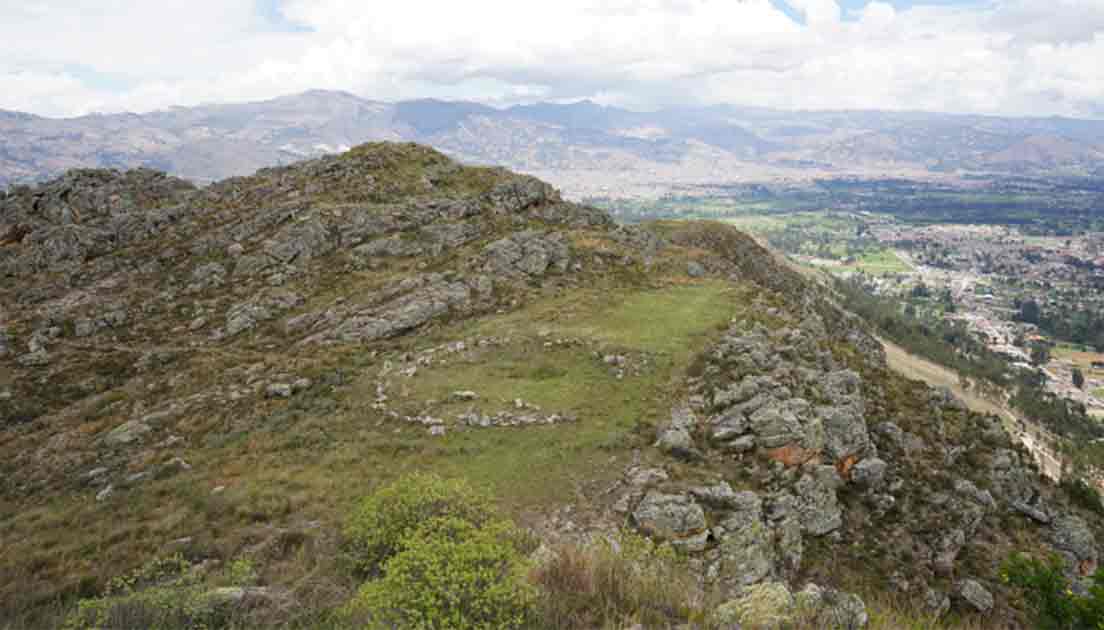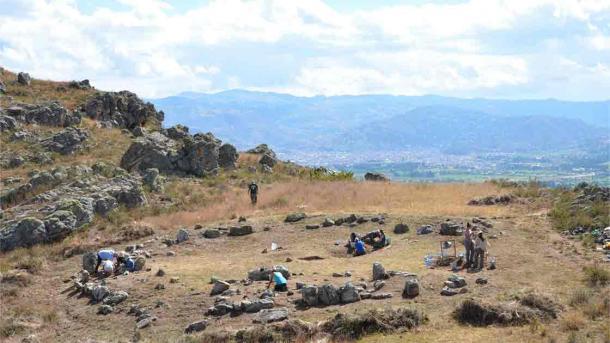Latin America
Related: About this forumArchaeologists Discover Mysterious Stone Circle Built Before Great Pyramids
Published Feb 28, 2024 at 3:55 PM EST
Updated Mar 01, 2024 at 3:29 PM EST
The monument is located in northern Peru's Cajamarca Valley at the Callacpuma archaeological site, which lies around 10,000 feet above sea level near the summit of a peak in the Andes. Stretching for more than 5,000 miles along the western edge of South America, the Andes range is the longest in the world.
Using radiocarbon dating techniques, researchers determined that initial construction of the circular plaza took place around 4,750 years ago, corresponding to the "Late Precaremic" period of Andean archaeology.

By Aristos Georgiou
Science and Health Reporter
Archaeologists have discovered a mysterious stone circle in the Andes Mountains that they say was constructed before the great pyramids of Egypt.
The circular stone plaza, which measures around 60 feet in diameter, consists of two concentric walls made from unshaped stones set vertically in the ground, according to a study reporting the find in the journal Science Advances.
The monument is located in northern Peru's Cajamarca Valley at the Callacpuma archaeological site, which lies around 10,000 feet above sea level near the summit of a peak in the Andes. Stretching for more than 5,000 miles along the western edge of South America, the Andes range is the longest in the world.
Using radiocarbon dating techniques, researchers determined that initial construction of the circular plaza took place around 4,750 years ago, corresponding to the "Late Precaremic" period of Andean archaeology.

"This structure was built approximately 100 years before the great pyramids of Egypt and around the same time as Stonehenge," Jason Toohey, anthropological archaeologist with the University of Wyoming and lead author of the study, said in a press release.
The circular plaza is an example of monumental megalithic architecture, which refers to prehistoric structures built using large stones. According to the study, the find at Callacpuma represents one of the earliest examples of monumental, megalithic ceremonial architecture in the Americas.
"This plaza is significant because it is a very early example of public, monumental, and megalithic architecture. There are a few slightly earlier examples in the Andes—and many more recent—but this is the earliest and only example like this from the Cajamarca region of northern Peru," Toohey told Newsweek.
More:
https://www.newsweek.com/archaeologists-discover-mysterious-stone-circle-built-before-great-pyramids-1874439?piano_t=1
Beartracks
(13,565 posts)... How is it that this stone circle was only just recently discovered?
=================
Biophilic
(4,738 posts)Most of us would never think something was that old, but someone with more knowledge might recognize it as something special that needed to be studied.
JoseBalow
(5,143 posts)It's hard to tell the scale just by the picture, but it doesn't seem very large. It would be nice if there were something beside it for reference.
I also am left to wonder about the size of the stones used. The article makes no mention of it.
Judi Lynn
(162,376 posts)4750-year-old Megalithic Stone Plaza Discovered in the High Andes of Peru
Feb 15, 2024

Two anthropology professors from the University of Wyoming have discovered a prehistoric plaza high in the Andes, known as Callacpuma stone plaza, which was built nearly 5,000 years ago by ancient nomadic groups.
The plaza, which is situated at the Callacpuma archaeological site in the Cajamarca Basin of northern Peru, was constructed using large megalithic stones that were arranged vertically, a technique not previously used in the Andes.
This significant finding is a unique structure of a stone circle, where offerings were made to long-forgotten gods over several millennia at an elevation of more than 3,000 meters (9850 feet) above sea level.
The project’s leader Associate Professor Jason Toohey, and Professor Melissa Murphy, have been researching this topic since the project began in 2015. Excavations for the plaza began in 2018.
Their article, published in the journal Science Advances, provides new information about the northern Andes’ oldest known circular megalithic plaza. Radiocarbon dating indicates that it was built around 4,750 years ago, during the Late Preceramic Period, making it one of the Americas’ earliest examples of this type of architecture.
Large megalithic stones are set in two concentric circles, each measuring 18 meters (60 feet) in diameter. This arrangement creates a ceremonial area that is full of unknown information from the time when hunter-gatherers in what is now Peru began to build more sophisticated societies.

Excavation of the stone circle at Callacpuma. Photo: Jason Toohey/Science Advances
A prominent feature of the late preceramic era, the plaza represents a critical period of transition in South America when coastal fishing communities started to trade with emerging mountain agricultural societies. It is a prime example of monumental architecture built prior to the widespread adoption of agriculture and long-term settlements
More:
https://arkeonews.net/4750-year-old-megalithic-stone-plaza-discovered-in-the-high-andes-of-peru/
Beartracks
(13,565 posts)... the excavation photo helps (I didn't scroll far enough down to see that one previously). Plants have grown back in a bit since then excavation!
===================